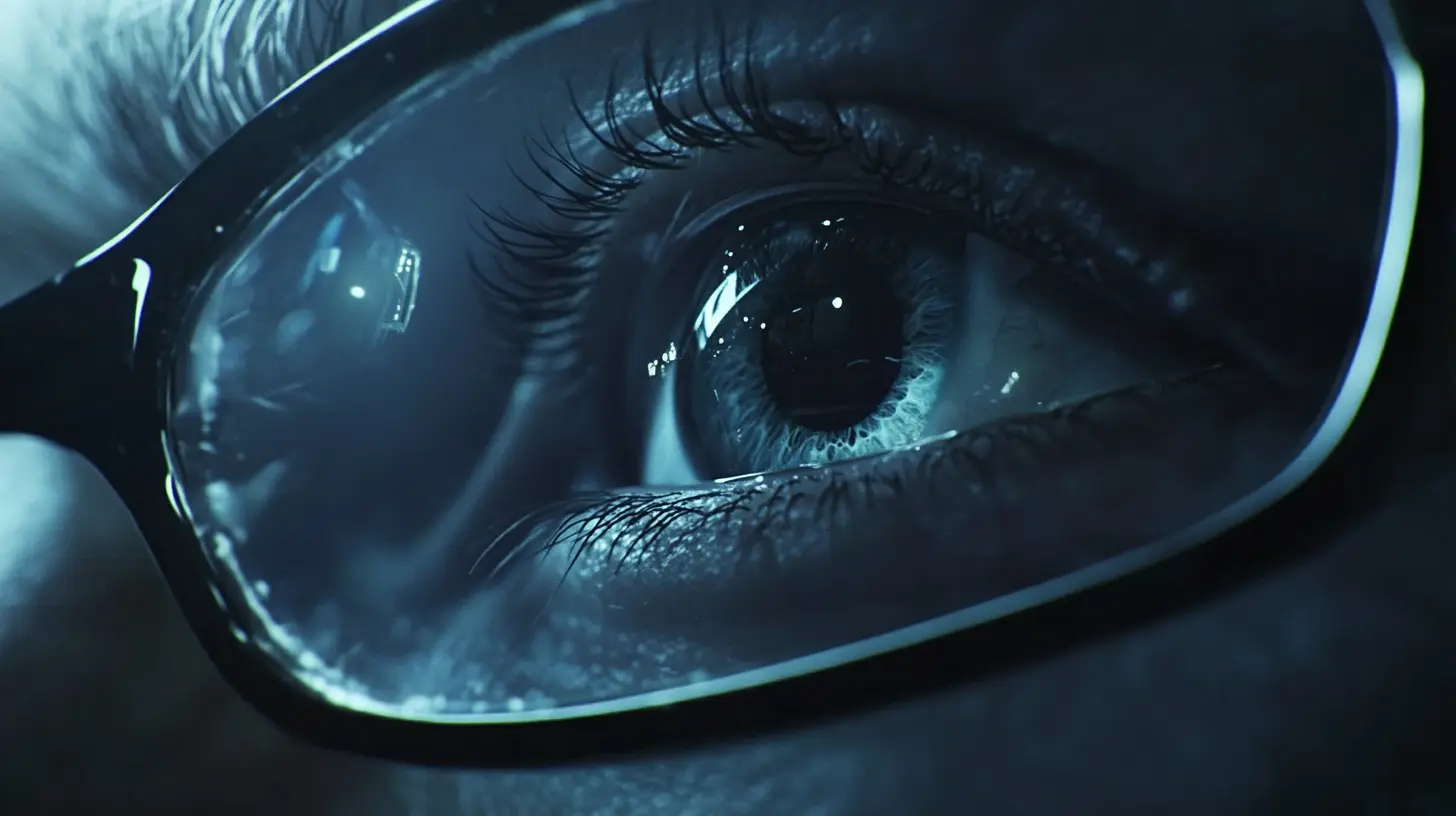Sourcing quality prescription lenses manufacturers has become competitive in the optical industry. Today, businesses have to source high-quality prescription lenses manufacturers so that they can offer superior eyewear solutions. In accordance with an industry report, the global prescription lenses market is estimated to amount to around $ 60 billion in the year 2026, growing at a CAGR of about 5 percent from 2021 to 2026. This also emphasizes the increasing demand of the lens market for most sophisticated lens technologies, apart from growing. It also talks about the changing preferences among consumers and raises their health consciousness regarding their exposure to blue light and UVs.
JINRUISHI Optical Glasses Co., Ltd., located in Jiangsu Province, China, strides as a strong contender against this emerging market. JINRUISHI release different mainstream lenses such as CR39 sunglasses lenses, CR39 polarized lenses, along with various photochromic lenses. JINRUISHI is making its way to the top for not only trendsetting eyewear but also for that extra special something that the consumers out there are always looking for. During this course, blue light blocking lenses were also added to the main collection in response to the increasing problem of digital eye strain. As firms go through the exciting yet challenging journey of sourcing goods within this promising and competitive industry, tips for identifying renowned manufacturers, such as JINRUISHI, become essential in paving the way to success.

In essence, the very first lesson in sourcing good prescription lenses suppliers focuses on quality as a very important concept. With the way the optical field evolves, the demand for prescription lenses increases by a significant margin. Quality, therefore, becomes a major factor affecting the end-user experience. This factor is very important particularly as today consumers are becoming extremely demanding, preferring not just pure correction functionality but frame designs that are trendy and innovative. Manufacturers with a continuous commitment to advanced technology and craftsmanship will be responsible for not only improving vision but also for setting trends in the eyewear market. Recent collaborations within the industry, such as those seeking augmented reality (AR) solutions or Virtual Reality (VR) applications, highlight yet another stream that is changing the dynamics of prescription lens manufacturing. These partnerships aim at melding sophisticated optical elements into the world of wearables. Companies recognize that consumers demand equally cutting-edge style and functionality. As companies begin to try 3D printing techniques to create customized optical components, high-quality manufacturing is surely in the works. One should keep the guard up when it comes to quality control. With the rise in demand came tales of manufacturers sacrificing lens accuracy for greater fortune, resulting in discrepancies and consumer dissatisfaction. Sourcing partners need to ensure that their manufacturers follow stringent quality standards, thereby maintaining consumer trust as well as brand integrity in a competitive market. Quality thus tends to emerge as a not-so-necessary requirement but one strong differentiator in a crowded field for prescription lenses.

For example, if you want to source high-quality prescription lenses manufacturers in this increasingly cut-throat market, a number of critical things must always be in consideration so that you choose the right partner. First is quality control; you should invest some time in learning about the manufacturer's production processes, certifications, and testing methods in order to be sure that the lenses conform to your specifications and industry standards. A manufacturer who has a strong quality assurance program would therefore be expected to provide their customers with products that are both consistent and reliable.
Another important factor is the manufacturer's capability for innovation and technology. It is expected that the market of the optical lens might grow phenomenally from 21.08 billion dollars in 2025 to 39.58 billion dollars by the year 2032. This will drive the need for advanced lens solutions. Hence, it is worth partnering or engaging with manufacturers that invest in and offer advanced technologies with a broad array of lens types, coatings, and designs that vary according to the ever-changing needs of consumers.
The reputation and customer service would also be other very important aspects. Review, read case studies as they give a picture of the reliability and responsiveness that these manufacturers have. Always develop good communications with the would-be manufacturers not just as channels of interaction but as catalysts of building an enduring partnership based on trust and collaboration. As it turns out, all these will enable you to cut through the competition when it comes to prescription lenses.

In a competitive market, production capability and technology will be paramount while considering sources of high-quality prescription lenses manufacturers. In all likelihood, the most successful manufacturers are those that have adopted advanced manufacturing practices in the spirit of Industry 4.0. Reports indicate that China has established itself as a prime locale for manufacturing due to the successful merging of Intelligent Digital Technologies into production processes, thus enabling more productivity, flexibility, and real-time decision-making by manufacturers.
Investment in technology is critical to gaining a competitive edge. Manufacturers that employ AI-based systems adjust their production lines for best performance with minimum use of resources. Recent reports state that some companies that use fewer chips than those used by their counterparts in Silicon Valley have had comparable performance levels with their AI systems, putting into question the old beliefs regarding technological supremacy. This indicates that one must also consider how efficient and innovative equipment the manufacturer is using.
Moreover, as prescription lenses are in greater demand worldwide, manufacturers need to further enhance their capabilities in material sourcing and production scaling. Reports show that the innovation trend in smart manufacturing is beyond the traditional sectors, electric vehicle battery manufacturing being a prime example where China has maintained and displayed its excellence in efficient management of every chain in the supply. Thus, settling on a vendor with a strong tech backbone and the resolve for ongoing improvement will be a key factor in ensuring high-quality wisens in this competitive arena.

Quality control systems need to be evaluated to ensure high quality and competitive pricing in sourcing prescription lenses today. This is obvious to many sectors after excessive industry reports laid bare the serious importance of strict quality assurances. An investigation of a huge aircraft manufacturer lasted six weeks, and by that time, 89 quality checks had discovered a total of 33 failings; thus, the great potential disaster concerning insufficient quality controls was highlighted.
Quality checks should consider the lens supplier's quality management procedures, as robust quality control frameworks are necessary for consistent production and minimized defects, according to the industry reports. Such evaluations would include assessments of the certification standards of the supplier, such as ISO 9001, towards high-quality outputs. Also, by asking regarding the frequency of quality audits and the handling of non-conformities, the supplier's attitude towards continuous improvement could be elicited.
Recent market studies have also shown that almost all optical suppliers are now maximizing the utilization of high technology for quality assurance, particularly automated inspection systems powered by artificial intelligence. Such advances assure the reduction of human error and an increase of speed to accomplish quality assessments. Among suppliers favored in investing all-out in perfectionist practices of quality control are key investments in the years of performance and customer satisfaction in a market where precision and reliability are the only requirements.
As building strong partnerships with manufacturers remains obligatory for businesses sourcing their prescription lenses from the high-quality market today, a report published by Market Research Future indicates that the global prescription glasses market is set to reach $151 billion by 2026 from 2019 onwards, experiencing a CAGR of 7.5%. Upward-trending factors for this include an increased demand for vision correction services among the elderly people and rising disposable incomes across many of the regions. Thus, effective partnerships with manufacturers will give companies the ability to offer better custom-made products and possess better understanding of market trend changes.
For example, activity promoting clear communication and understanding by putting up an effective mutual collaboration effort is essential. Research by the Journal of Business Research has proved this by saying that companies synchronizing their messages with their suppliers saw increase efficiency by 25 percent and 18 percent improvement in overall profitability. For instance, those sharing their common goals, expectations, and feedbacks could also realize high-quality products with more streamlined supply chain which is of utmost importance in fast-moving industry such as eyewear.
The development of these relationships is also seen as a form of risk management since their introduction also involves spending time with the parties on such activities. A supplier evaluation process must be very comprehensive, including quality control measures, production capacities, and past customers' names references. The survey made by Deloitte showed that 79% of companies see their relationships with suppliers as their most important source of competitive advantage. This is because it assures better pricing but also an opportunity to co-develop creative, cross-category lens solutions for ever-evolving consumers.
In the present competitive scenario for eyewear production, it would require a little more strategy in its approach to pricing without compromising on the quality of the lenses manufactured. According to reports from the industries, it is expected that the eyewear market would increase globally to almost $180 billion by 2025 based on increasing demand for both surgically or medically corrective eyeglasses as well as statement eyewear. These stats alone make it very important to choose manufacturers who will provide nothing less than excellence packaged at great value.
When checking out the prospective manufacturers, their pricing strategies must first and foremost be extensively analyzed. As per a report by Grand View Research, around 80% of consumers consider quality to be the factor that would make them decide to buy eyewear products. Thus, the manufacturers adopting transparent price structures that are revelant to the quality of materials used and the craftsmanship will most probably end up with very loyal customers. It would be best to ask for samples and quality checks before bulk purchases so that lenses can be met with standards and customers' expectations.
This indeed improves sourcing efficiency. A research study done by Deloitte in 2021 stated that an organization adopting automation in its supply chains was able to save around 20 % cost in its operations. Companies would also want to take resort to using advanced analytics to compare offers from manufacturers so they can weigh the advantages of competitive pricing from quality assurance; this would result in better consumer satisfaction and reputation of the brand in a very competitive market.
Sourcing high-quality prescription lens manufacturers should involve confirming their credibility through certifications and compliance with industry standards. Certification is a yardstick that proves the manufacturer’s commitment to quality, providing assurance that their products meet certain performance and safety requirements. In terms of particular certifications and standards, ISO certifying shows that a manufacturer is following the system of established quality management practices, while CE marking shows compliance with the health and safety regulations of Europe; these two are among the most vital.
Besides certification, it's also important to see if manufacturers respect other relevant industry standards, such as ANSI (American National Standards Institute) and ASTM (American Society for Testing and Materials). The standards go a long way in ensuring that the lenses produced are safe and high-performing. Manufacturers really working with these standards are more likely to deliver durable products that perform, thus protecting the consumer while enhancing the vision. Therefore, ask prospective suppliers for copies of their certificates and verify that they comply with the relevant standards.
Besides this, discussing the manufacturers' quality control measures and technologies would provide more insights into their credibility. Manufacturers who use advanced lens-making technologies and show a great capacity for continuous improvement will definitely have a competitive advantage. By targeting these critical items, you will be able to identify manufacturers who are regulatory-compliant and actually excel in the manufacture of high-quality prescription lenses.
In the quickly changing world of prescription lens manufacturing, producers must always remain alert to trends and innovations if they are to keep their competitive status. Perhaps the most glaring trend is that of artificial intelligence (AI) coming to fruition alongside optical technology. This is evidenced in reports claiming that AI glasses are expected to infiltrate the market to the tune of about 2 million units shipped by the year 2024. This particular trend indicates increasing consumer acceptance of smart eyewear that augments vision correction with intelligent features, thus creating new avenues for lens manufacturers to innovate and diversify their products.
In addition, advancements in virtual and augmented realities are now controlling the future of prescription lenses. With their recent development, there is a growing need for lenses that imbibe AR- and VR-enabled functionality. Such a turn of events accentuates the necessity for the development of lenses that also correct vision and enhance immersion. Therefore, lens manufacturers investing in R&D and developing lenses for these technologies will likely be spearheading an emerging market.
Furthermore, niche markets are growing. For instance, some skiing goggles with prescription capabilities are projected to see rapid growth, which highlights the need for manufacturers to cater to scentills, a blend of forest, fields, and the perception of sight. By understanding and leveraging these trends, prescription lens producers will position themselves wisely in a competitive market that must withstand the ever-changing consumer demands for both functional and innovative eyewear.
Quality is crucial in prescription lens manufacturing as it significantly impacts the end-user experience, influencing both corrective functionality and the stylishness of the designs. High-quality lenses enhance vision and affect consumer satisfaction and brand integrity.
Recent trends include collaborations in augmented reality (AR) and virtual reality (VR) applications, as manufacturers integrate sophisticated optical elements into wearable devices, aiming to meet consumers' demands for functionality and style.
Technologies like 3D printing allow for the customization of optical components, showcasing the potential for high-quality manufacturing practices and innovation in the production of prescription lenses.
Certifications, such as ISO standards and CE marking, demonstrate a manufacturer's commitment to quality and compliance with safety criteria, ensuring that their products meet specific performance and safety standards.
Important industry standards include ANSI (American National Standards Institute) and ASTM (American Society for Testing and Materials), which help ensure that produced lenses meet rigorous safety and performance expectations.
It is essential to request copies of certifications and confirm compliance with relevant standards. Additionally, discussing their quality control processes and technologies can provide insight into their credibility and commitment to quality.
A manufacturer can demonstrate commitment to quality by adhering to certifications and industry standards, investing in advanced lens-making technologies, and showing a dedication to continuous improvement in their manufacturing processes.
Compromising on lens quality can lead to inaccuracies and customer dissatisfaction, negatively affecting consumer trust and the brand's reputation in a competitive market.
The rising demand for prescription lenses has led manufacturers to prioritize quality, innovation, and style in their offerings, influencing trends in the eyewear market and driving advancements in manufacturing practices.






